Introduction
In the ever-evolving digital landscape, customer service is a critical touchpoint between businesses and their customers. Ensuring prompt, efficient, and satisfactory customer interactions can significantly influence a company's reputation and success.
One revolutionary tool transforming is the AI chatbot for customer service. Leveraging artificial intelligence (AI) and natural language processing (NLP), AI customer service chatbots interact with customers in a human-like manner, offering immediate assistance and resolving issues efficiently.
This blog delves into the intricacies of AI chatbot for customer service, exploring their definition, importance, and the steps to implement them effectively.
Definition of an AI chatbot for customer service
An AI chatbot for customer service is a sophisticated software application designed to understand, interpret, and respond to customer inquiries in real-time.
Utilizing AI and NLP, AI chatbot for customer service provide a dynamic and responsive customer experience. They handle complex interactions with ease and continuously learn from each interaction to enhance their performance.
Unlike traditional customer service methods, AI customer service chatbots offer immediate assistance and are available 24/7, significantly reducing response times and improving customer satisfaction.
Importance of Implementing AI Chatbot for Customer Service
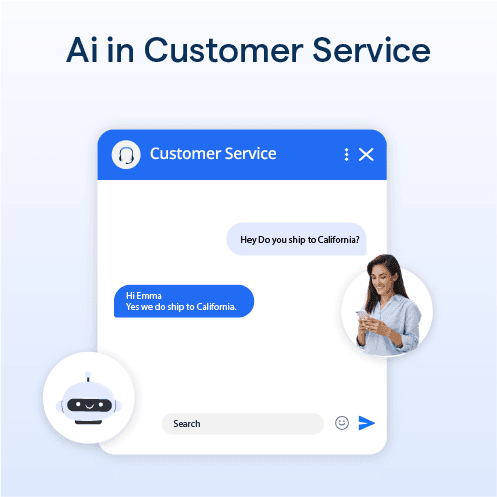
In today’s fast-paced digital world, businesses are increasingly adopting an AI chatbot for customer service.
These chatbots offer 24/7 support, reduce response times, and handle a high volume of inquiries simultaneously, leading to improved customer satisfaction and operational efficiency.
By automating routine tasks and providing instant responses, AI customer service chatbots free up human agents to focus on more complex issues, thereby optimizing the overall customer service workflow.
This blog will guide you through the essential steps of planning, designing, developing, integrating, testing, optimizing, deploying, and maintaining an AI chatbot for customer service.
By the end, you will have a comprehensive understanding of the process and the benefits of implementing AI chatbot for customer service in your business.
Planning and Design
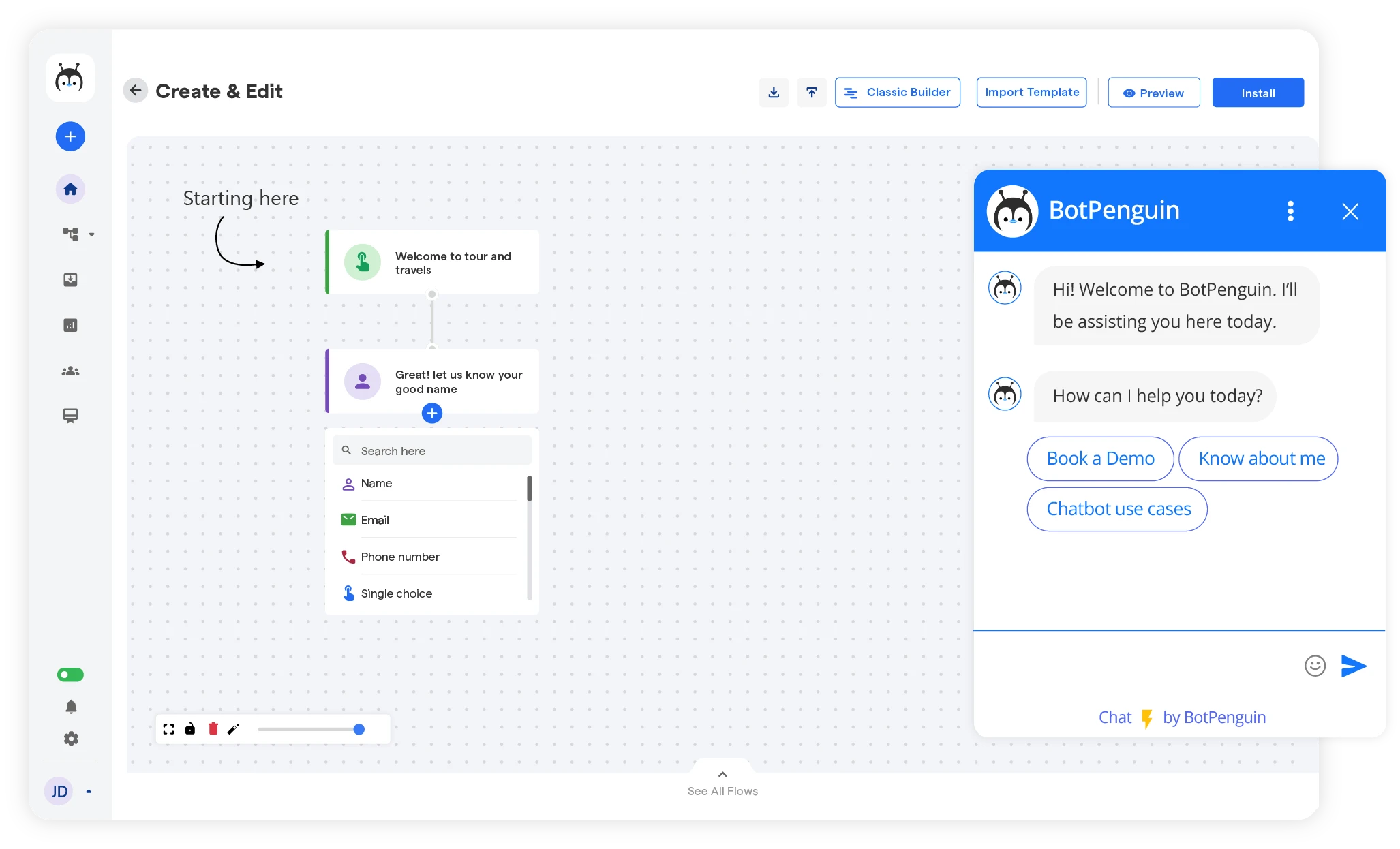
Thorough planning and design are essential for successful AI customer service chatbots. This involves setting clear goals, understanding the target audience, and selecting appropriate technology, ensuring seamless implementation and optimal performance.
Set clear goals and objectives for the AI customer service chatbot.
Defining clear goals and objectives is the first crucial step. Determine what you aim to achieve with the chatbot—whether it’s reducing customer wait times, providing after-hours support, or enhancing the overall customer experience.
These goals will guide the chatbot’s functionality and performance metrics. Clear objectives ensure that every aspect of the chatbot, from its design to its deployment, aligns with the desired outcomes.
Determine the target audience and their needs.

Understanding your target audience is essential. Identify the common issues and queries your customers have.
This ensures that the AI chatbot for customer service is tailored to meet their specific requirements, providing relevant and helpful responses that enhance user satisfaction.
Conducting surveys, analyzing customer service logs, and consulting with your customer service team can help identify these common issues and needs.
Choose the right platform and technology for the AI customer service chatbots.
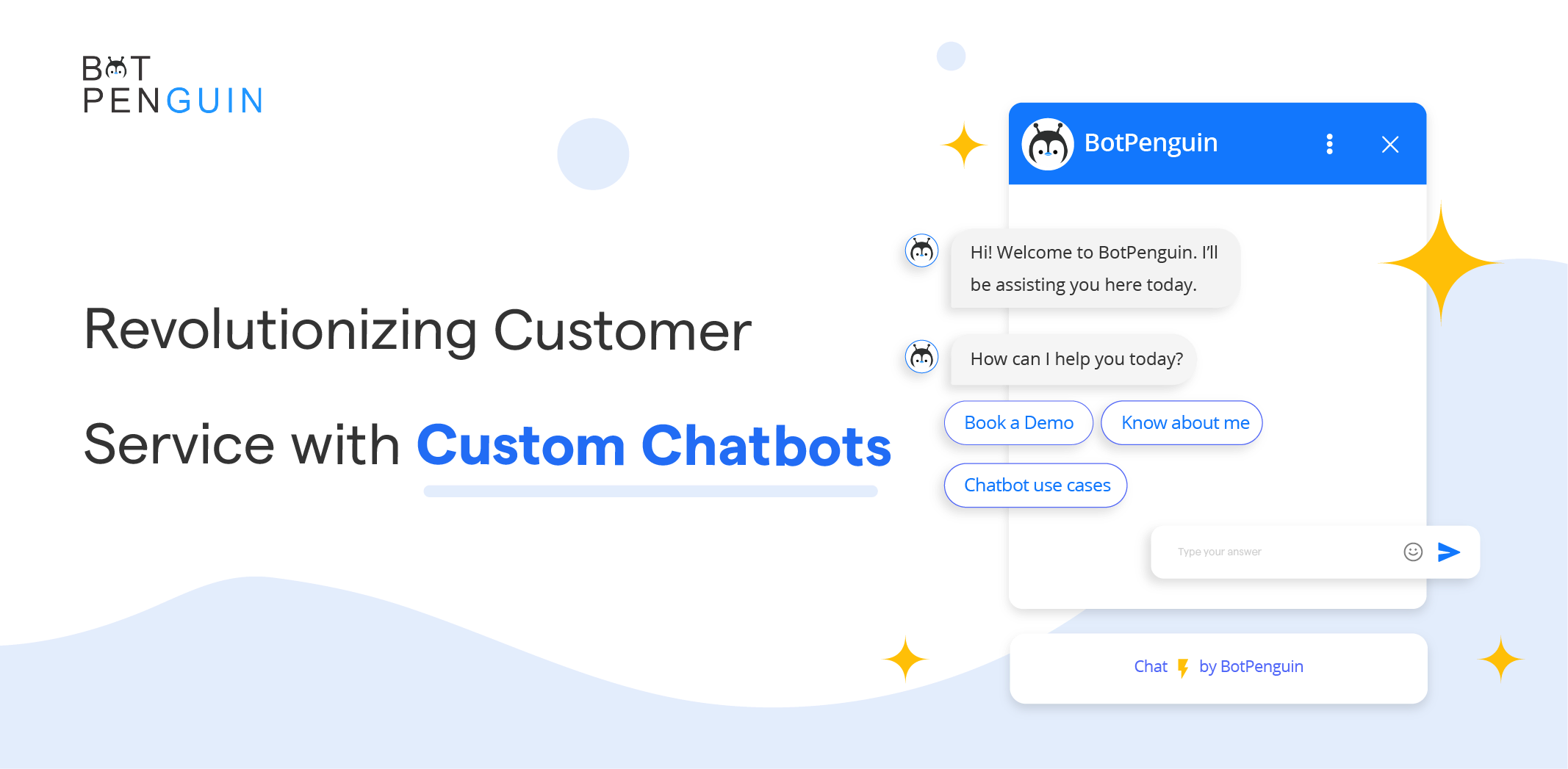
Selecting the appropriate platform and technology is vital for the chatbot’s success. Consider factors such as scalability, integration capabilities, and ease of use.
Platforms like BotPenguin offer user-friendly interfaces and robust features, making them ideal for developing and deploying AI customer service chatbots.
Evaluate different platforms based on their ability to meet your specific requirements, including support for various communication channels and languages.
Development and integration
Developing and integrating an extensive FAQ database is crucial for enhancing AI customer service chatbots.
This process involves compiling common customer queries and responses, ensuring accurate and timely support. Regular updates based on new queries and feedback keep the AI customer service chatbots relevant and effective.
Create a database of common customer queries and responses.
A well-organized database of FAQs is the backbone of an effective chatbot. Compile a list of common customer queries and corresponding responses.peng
This database allows the AI customer service chatbots to provide accurate and helpful information promptly.
Regularly updating this database based on new queries and feedback ensures the AI customer service chatbots remain relevant and useful.
Train the AI customer service chatbots using machine learning algorithms.
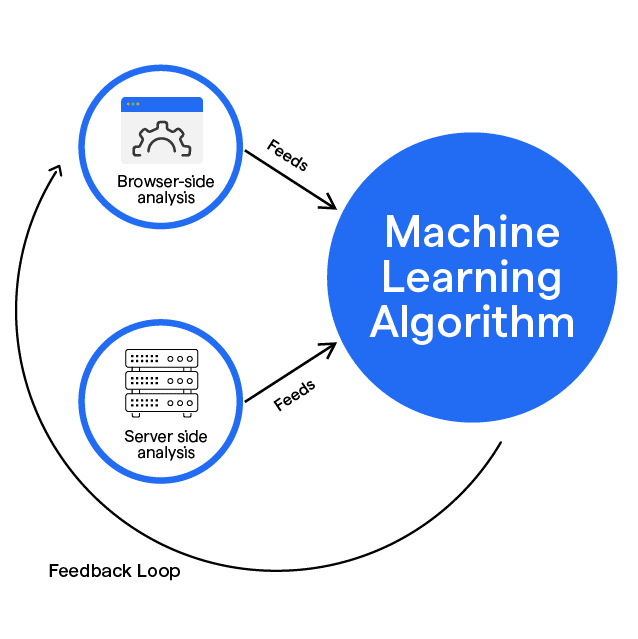
Training the AI chatbot for customer service with machine learning algorithms is critical. This process involves feeding the AI chatbot for customer service with data sets and teaching it to recognize patterns and improve its responses over time.
Regular training helps the AI customer service chatbots become more efficient and accurate. Using a mix of supervised and unsupervised learning techniques can enhance the chatbot’s ability to understand and respond to complex queries.
Integrate the AI customer service chatbots with existing customer service channels.
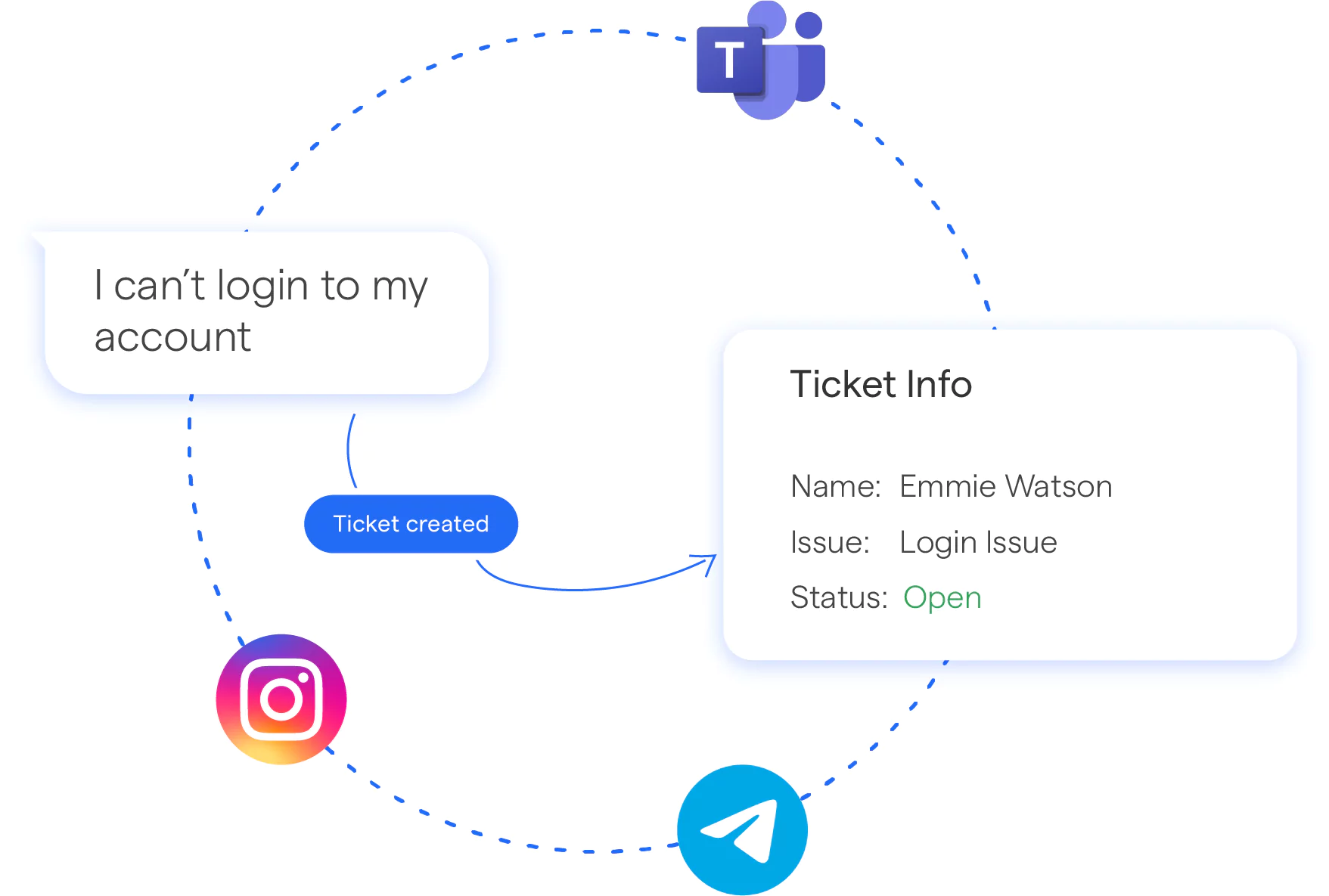
Seamless integration with your existing customer service channels—such as your website, mobile app, and social media platforms—ensures a cohesive customer experience.
This integration allows customers to interact with the AI chatbot for customer service through their preferred channels. Using APIs and other integration tools can help connect the AI customer service chatbots with various systems, such as CRM and ticketing systems, to provide a unified customer service experience.
Testing and optimization
Thorough testing and continuous optimization are crucial for AI chatbots for customer service. This involves identifying and fixing bugs, analyzing customer feedback, and making necessary improvements to ensure seamless performance and user satisfaction.
Conduct thorough testing to identify and fix any bugs or issues.
Before deployment, conduct extensive testing to identify and rectify any bugs or issues.
This includes testing various scenarios and user interactions to ensure the AI chatbot for customer service functions smoothly and accurately under different conditions.
Testing should cover both functional and non-functional aspects, including performance, security, and usability.
Analyze customer feedback and make necessary improvements.

Customer feedback is invaluable for improving the AI chatbot for customer service . Collect and analyze feedback to understand user experiences and identify areas for enhancement.
Making necessary improvements based on feedback ensures the chatbot remains effective and user-friendly.
Implementing a feedback loop where users can easily provide their input can help continuously refine the chatbot.
Continuously optimize the chatbot for better performance and user experience.
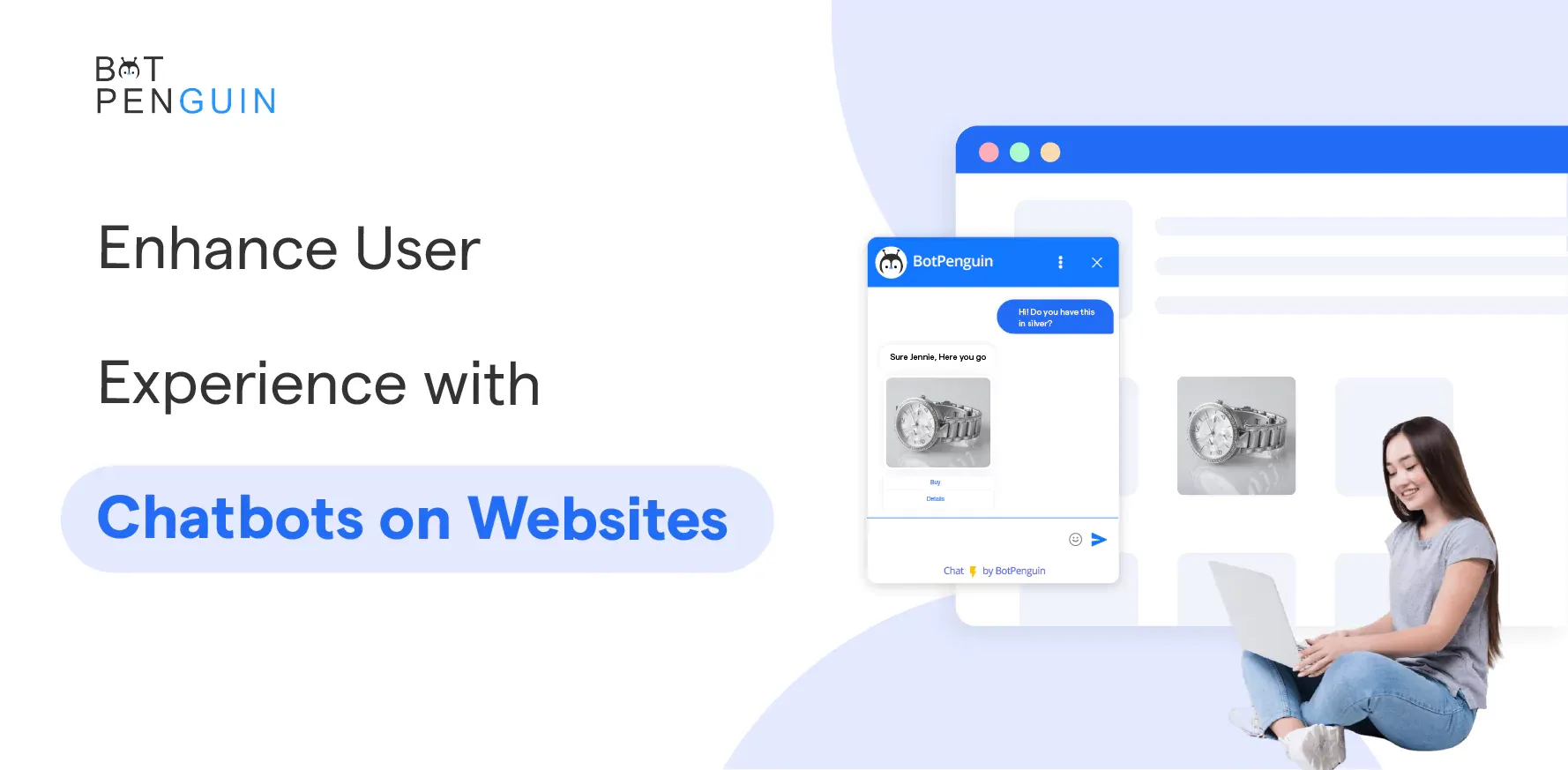
Optimization is an ongoing process. Regularly update the chatbot’s algorithms and knowledge base to improve its performance and user experience.
This ensures the chatbot remains relevant and continues to meet evolving customer needs.
Monitoring key performance indicators (KPIs) and using analytics tools can help track the chatbot’s effectiveness and guide further optimization efforts.
Deployment and maintenance
Successful deployment and ongoing maintenance of the AI chatbot for customer service involve integrating them seamlessly across platforms and providing detailed training for customer service agents. This ensures smooth operation, effective user support, and optimal performance throughout the chatbot's lifecycle.
Deploy the AI chatbot for customer service on the desired channels and platforms.
Once testing and optimization are complete, deploy the chatbot on the selected channels and platforms. Ensure that the deployment process is smooth and that the chatbot is accessible to all intended users.
Providing clear instructions and support for users can help facilitate adoption and usage.
Provide training for customer service agents on how to work with the AI customer service chatbots.
Training customer service agents to work alongside the chatbot is crucial. This ensures that they can effectively collaborate with the AI, enhancing the overall customer service experience by combining human expertise with AI efficiency.
Training should cover how to escalate complex issues to human agents, how to interpret chatbot interactions, and how to provide additional support when needed.
Regularly update the chatbot’s knowledge base and algorithms.
Regular updates to the chatbot’s knowledge base and algorithms are necessary to keep it relevant and efficient. Continuous development helps the chatbot adapt to new queries and provide up-to-date information.
Establishing a maintenance schedule and using automated tools can help manage these updates efficiently.
Benefits of AI Chatbot for Customer Service
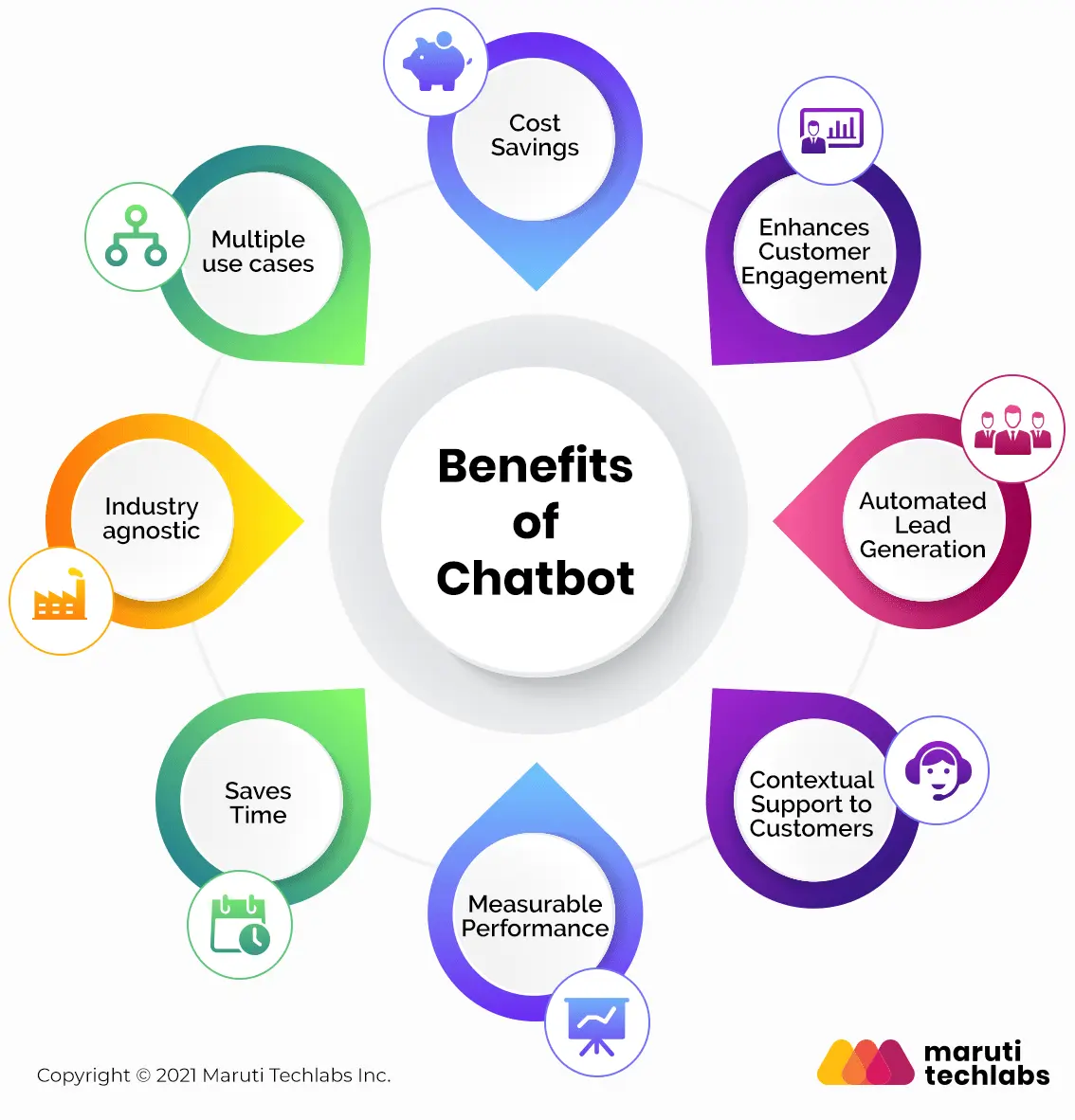
AI chatbot for customer service significantly improves customer service by providing round-the-clock support, delivering instant and accurate responses, and personalizing interactions. They also reduce operational costs and enhance overall efficiency.
Cost Efficiency
With an AI chatbot for customer service, things get done faster and cheaper. These chatbots can handle bunches of customer queries at once, something even the best human agent can't do.
That means less waiting for customers and fewer people needed on your customer service team, which equals money saved.
24/7 availability and improved customer satisfaction
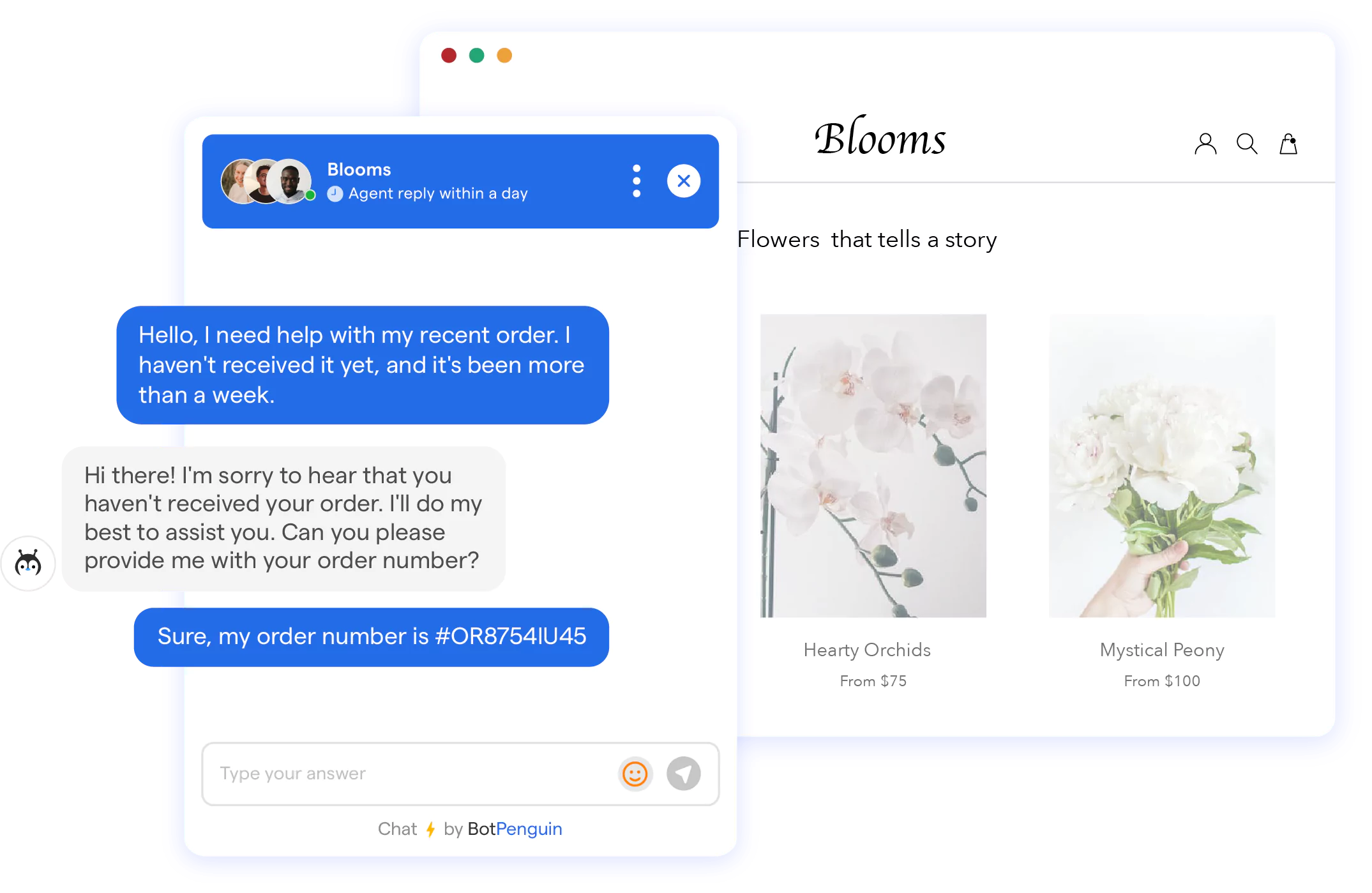
AI customer service chatbots don't need coffee breaks or sleep. It's there all the time, any day of the week.
Customers get their answers whenever they need them, making them happier because they're being helped instantly.
Personalized interactions and increased sales opportunities
The AI chatbot for customer service doesn't just shoot out canned responses. It can learn from past chats and get better at giving customers what they want over time.
This kind of personalized touch can turn a simple chat into a sale because the bot suggests products that hit the mark for each customer.
Practical establishment of AI Chatbots
The practical establishment of the AI chatbot for customer service involves integrating them into existing systems, tailoring them to specific business needs, and training them on relevant data. This ensures effective, streamlined operations and improved customer interactions.
Defining Your Chatbot's Purpose and Goals
To make a chatbot that really helps, you've got to know what's bugging your customers. What do they keep asking about or getting stuck on?
Those are the things your chatbot should be all over, offering solid answers without them having to ask twice.
Aligning the Chatbot with Your Overall Customer Service Strategy
An AI chatbot for customer service isn't just a cool tool—it should feel like part of the team. It has to fit snugly with how you want customers to see your brand and the kind of service you aim to provide. That way, when customers chat with the bot, it's seamless, like it's all coming from the same helpful place.
Suggested Reading:Customer Support Automation
Choosing the Right AI Chatbot for Customer Service: BotPenguin
Selecting an efficient AI chatbot for customer service can significantly enhance your business's ability to handle inquiries and provide support. BotPenguin offers a powerful chatbot solution that streamlines query resolution and elevates the customer experience. Some of the key features of BotPenguin's AI chatbot maker are:
Natural Language Understanding and Conversational Abilities
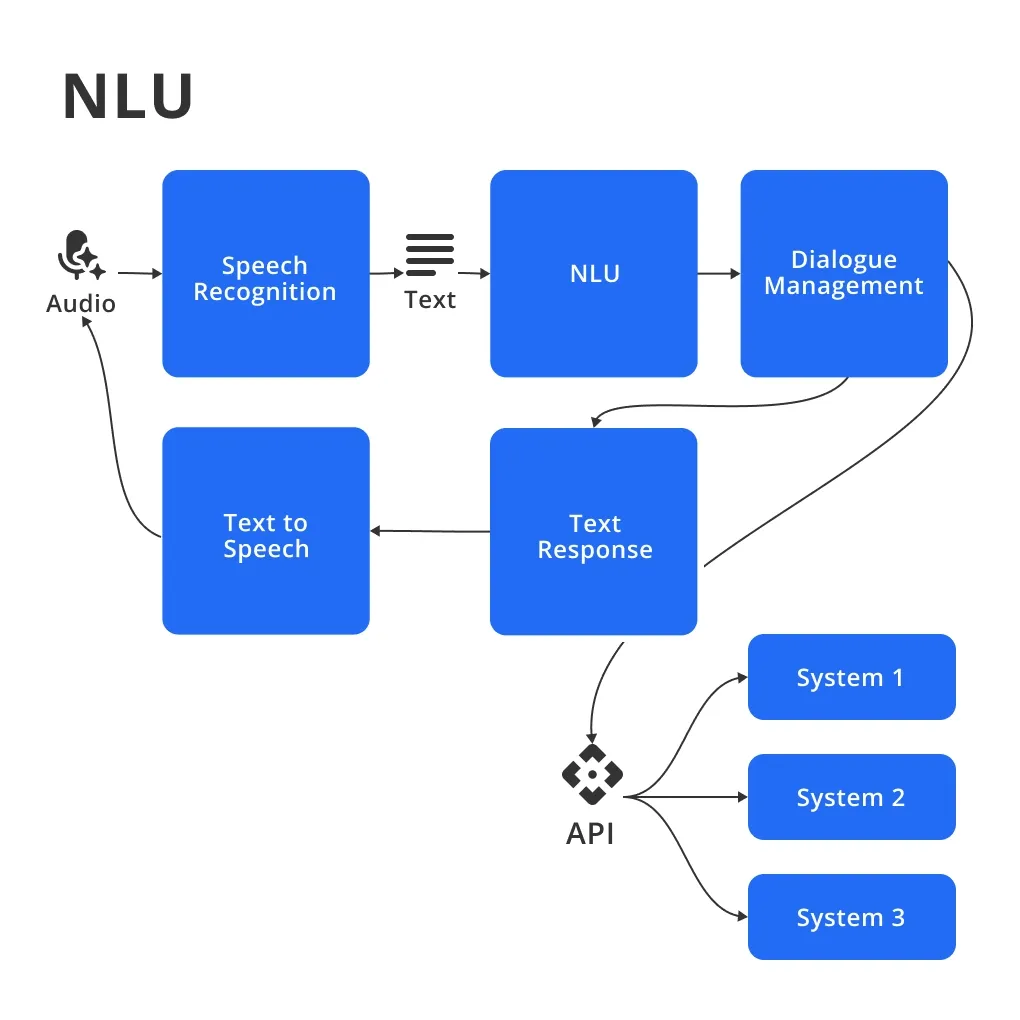
BotPenguin's chatbot is designed to understand questions in natural language, enabling it to hold meaningful conversations and provide accurate answers to customer inquiries. This advanced natural language processing capability ensures customers receive timely responses without the need for human intervention.
Integration with Multiple Data Sources
With over 60 integrations, BotPenguin's chatbot can access a wealth of additional data sources, enhancing its ability to provide comprehensive and informed responses.This integration facilitates a smooth customer experience by quickly retrieving relevant information.
Interactive and Engaging Responses
The chatbot offers rich media options to make interactions more engaging. Customers can enjoy responses supplemented with GIFs, emojis, or images, creating a more dynamic and enjoyable interaction.
Adaptive and context-aware
BotPenguin's chatbot is capable of asking follow-up questions, clarifying misunderstandings, and maintaining a dialogue until the customer's needs are fully met. Frequently used phrases are saved to eliminate repetition and save time, improving efficiency and satisfaction.
Seamless handover to Human Agents
When more complex issues arise, the chatbot seamlessly transfers conversations to a human agent, ensuring that the personal touch and technical support required are always available.
This hybrid approach combines automation with the necessary human interaction.
User-Friendly Platform

The platform is designed for non-technical users, allowing businesses to build custom chatbots without any coding knowledge.
These chatbots can be easily deployed on popular messaging apps like Facebook Messenger, Telegram, and WhatsApp, ensuring customers can reach out on their preferred platforms.
Secure Data Handling
Customer data and conversations are stored securely, prioritizing privacy and compliance. This secure environment builds trust and confidence in your customer service operations.
Efficiency and Automation
By automating routine support tasks, BotPenguin's chatbot frees up human agents to focus on more complex issues, optimizing resource allocation and enhancing overall service efficiency.
Experience the BotPenguin Advantage
Connect with BotPenguin today to see how their AI chatbot can transform your customer support. Schedule a demo and discover the benefits of a streamlined, efficient, and engaging customer service experience. BotPenguin is dedicated to helping your business provide exceptional support and improve customer satisfaction.
Conclusion
Throughout this blog, we have explored the vital steps and benefits of implementing an AI chatbot for customer service.
From planning and design to development, integration, testing, optimization, deployment, and maintenance, each phase plays a critical role in ensuring the chatbot’s success.
The implementation of AI chatbots revolutionizes customer service by offering cost efficiency, 24/7 availability, personalized interactions, and increased sales opportunities.
They streamline processes, recover abandoned carts, provide personalized product recommendations, offer real-time order tracking, simplify appointment scheduling, and facilitate FAQ and self-service support.
As AI chatbots continue to evolve, they have become indispensable tools for businesses aiming to enhance customer service.
By embracing this technology, businesses can provide exceptional customer experiences, foster brand loyalty, and stay ahead in the competitive market.
AI chatbots are not just tools; they are valuable assets that transform the way businesses interact with their customers, paving the way for a more efficient and customer-centric future.
Frequently Asked Questions (FAQs)
What's the First Step in Implementing an AI Chatbot for Customer Service?
Identify your customer service needs and goals to find a chatbot solution that aligns with them.
Can I customize the AI chatbot to fit my brand?
Yes, most AI chatbot platforms allow customization to match your brand’s tone and personality.
How Do I Train My AI Chatbot?
Feed it with FAQs, your service playbook, and past customer interactions to learn from.
Will the AI chatbot work with my existing CRM software?
Many chatbots are designed to integrate with popular CRM software, including Hubspot, Salesforce, Agile, etc., enhancing your customer service process.
How Can I Measure the Success of My AI Chatbot?
Track metrics like resolution time, customer satisfaction scores, and usage statistics to gauge effectiveness.
